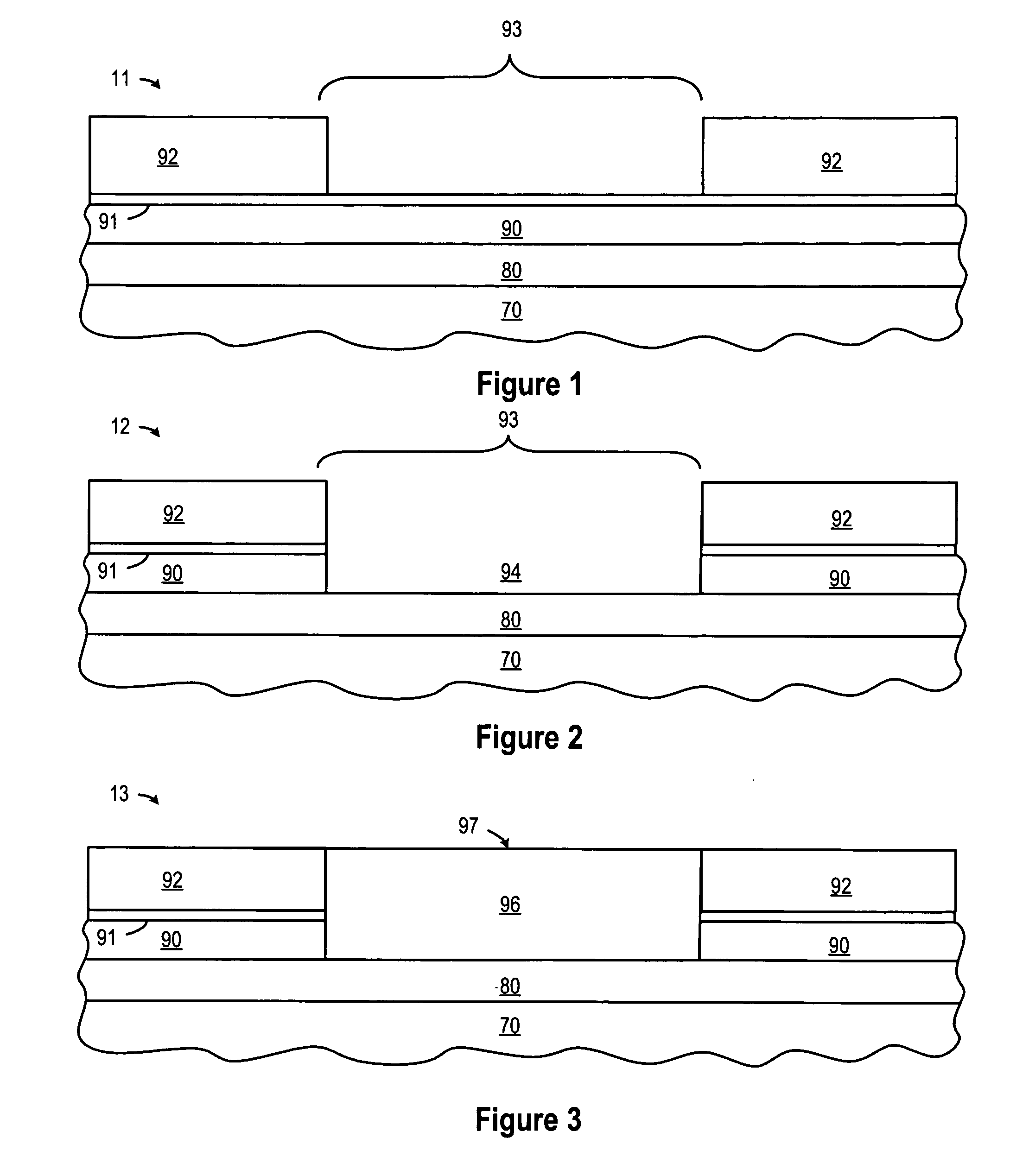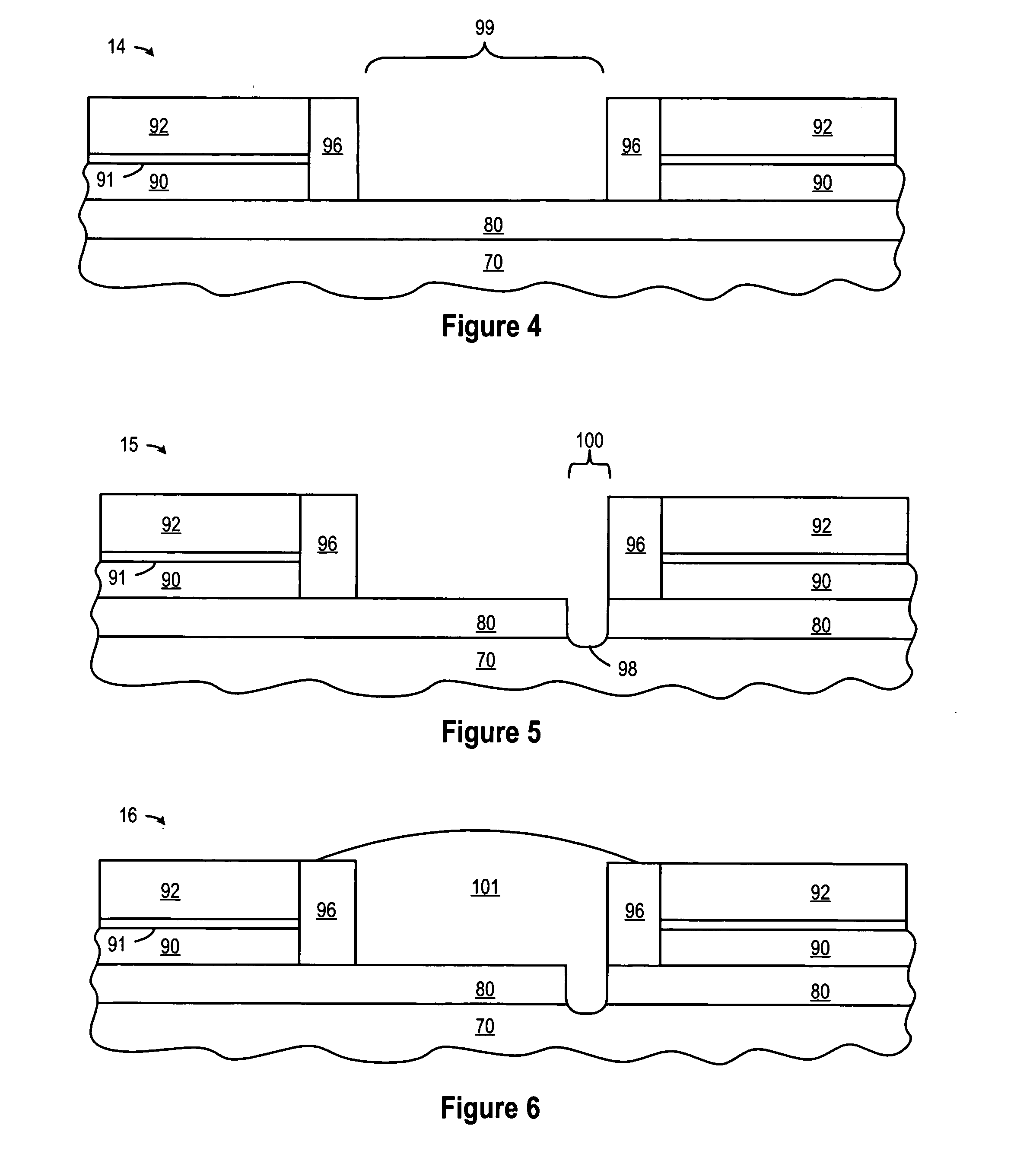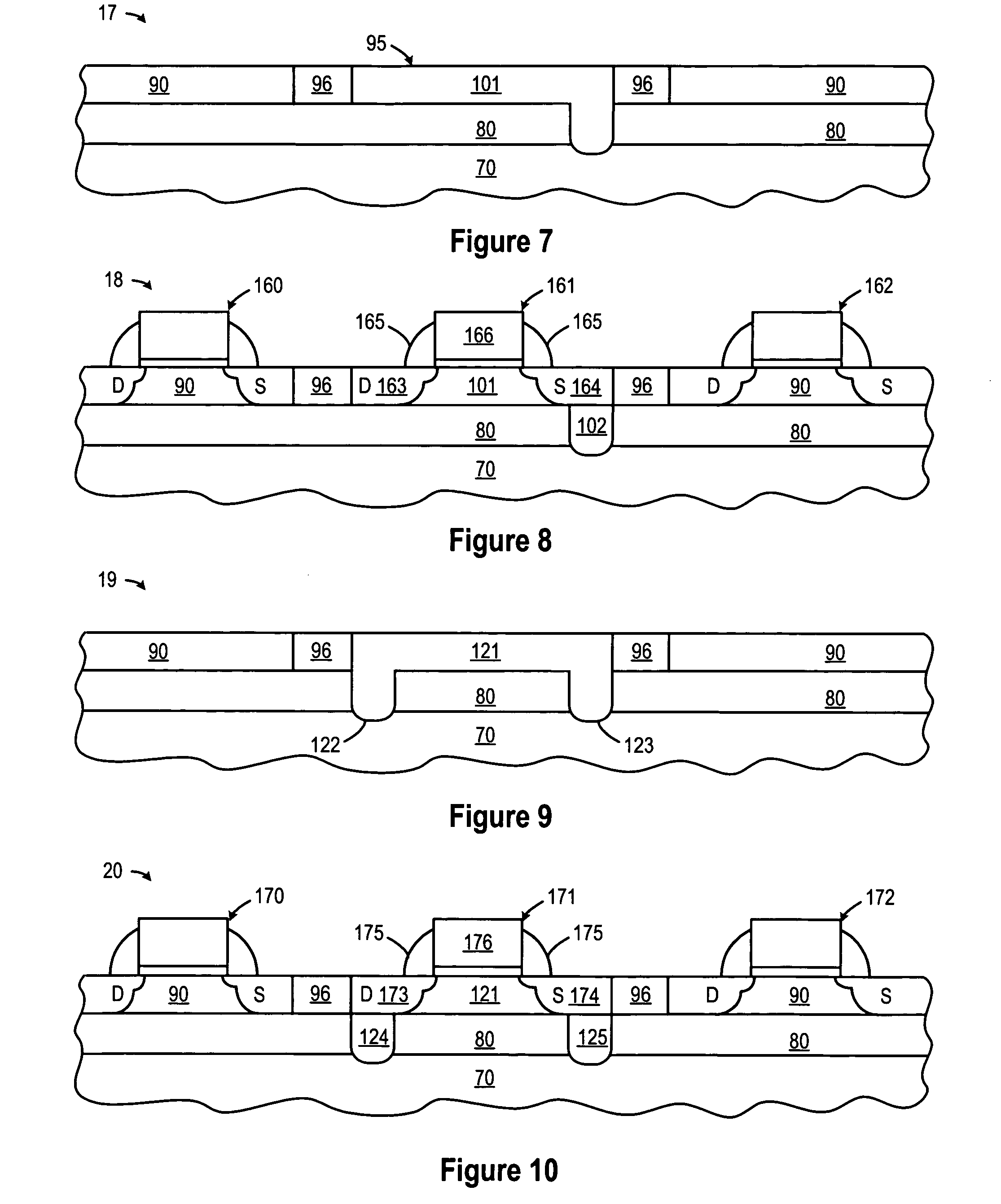Dual surface SOI by lateral epitaxial overgrowth
a technology of lateral epitaxial overgrowth and soi, applied in the field of high-performance field-effect transistors, can solve the problems of layout and design penalties, the redesign and integration development cost of overcoming the performance limitations of bulk silicon can be substantial, and the performance of soi substrates can be degraded
- Summary
- Abstract
- Description
- Claims
- Application Information
AI Technical Summary
Benefits of technology
Problems solved by technology
Method used
Image
Examples
Embodiment Construction
[0030]A method and apparatus are described for fabricating high performance CMOS devices with hybrid or dual surface orientations using lateral epitaxial overgrowth to form SOI and quasi SOI CMOS devices. Using lateral epitaxial overgrowth from one or more seed areas in an underlying bulk semiconductor substrate, semiconductor layers or seed regions can be grown from the bulk semiconductor and over an insulator layer to form SOI substrates. Depending on the size and configuration of the seed regions, the SOI devices (e.g., MOSFET transistors) formed over the overgrown semiconductor layers may be placed so that at least the source region (if not also the channel region) is located over the seed region, though the drain region may also be located over a seed region when multiple seed regions are formed. In addition or in the alternative, SOI devices formed over the overgrown semiconductor layers may be placed so that the drain region is located over a buried oxide layer, thereby reduc...
PUM
 Login to View More
Login to View More Abstract
Description
Claims
Application Information
 Login to View More
Login to View More - R&D
- Intellectual Property
- Life Sciences
- Materials
- Tech Scout
- Unparalleled Data Quality
- Higher Quality Content
- 60% Fewer Hallucinations
Browse by: Latest US Patents, China's latest patents, Technical Efficacy Thesaurus, Application Domain, Technology Topic, Popular Technical Reports.
© 2025 PatSnap. All rights reserved.Legal|Privacy policy|Modern Slavery Act Transparency Statement|Sitemap|About US| Contact US: help@patsnap.com



